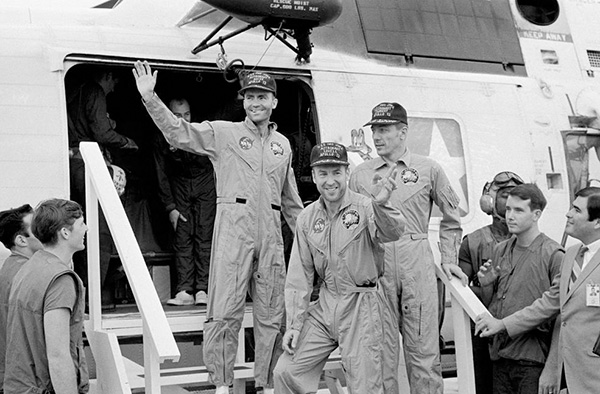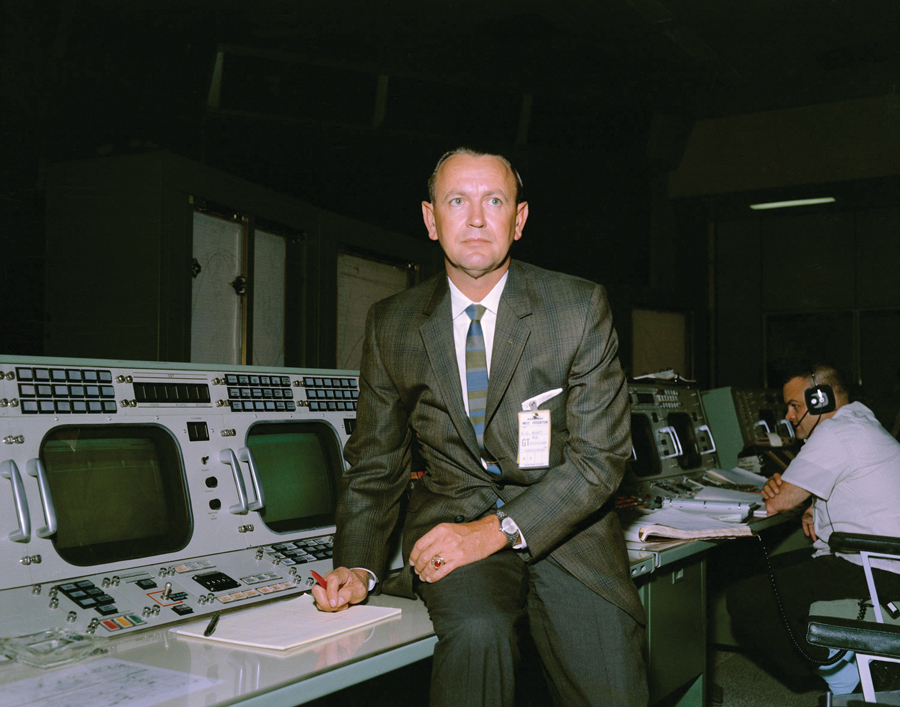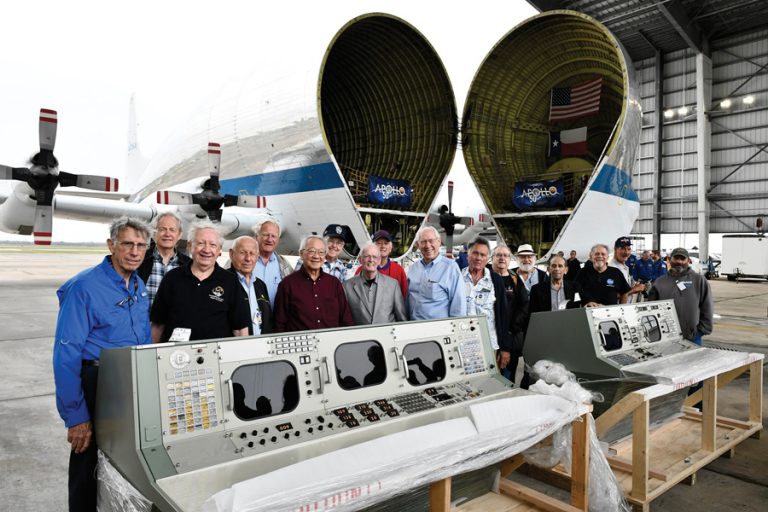
Crewmembers of the Apollo 13 mission, step aboard the USS Iwo Jima, prime recovery ship for the mission, on April 17, 1970, following splashdown and recovery operations in the South Pacific Ocean. Exiting the helicopter which made the pick-up some four miles from the Iwo Jima are (from left) astronauts Fred W. Haise Jr., lunar module pilot; James A. Lovell Jr., commander; and John L. Swigert Jr., command module pilot. The crippled Apollo 13 spacecraft splashed down at 12:07:44 p.m. (CST), April 17, 1970. NASA Photo
“Our goal 50 years ago was to save our valiant crew after sending them around the Moon and return them safely to Earth,” said NASA Administrator Jim Bridenstine. “Our goal now is to return to the Moon to stay, in a sustainable way. We are working hard to ensure that we don’t need to respond to this kind of emergency in Artemis, but to be ready to respond to any problems we don’t anticipate.”As NASA marks the 50th anniversary of the Apollo 13 mission – which has become known as “a successful failure” that saw the safe return of its crew in spite of a catastrophic explosion – the agency is sharing a variety of resources, recognizing the triumph of the mission control team and the astronauts, and looking at how those lessons learned can be applied to its lunar Artemis program.
The crew of Apollo 13 consisted of Commander James (Jim) Lovell Jr., Command Module Pilot John Swigert Jr. and Lunar Module Pilot Fred Haise Jr. Their Saturn V rocket launched at 2:13 p.m. EST on April 11,1970, from Launch Pad 39A at NASA’s Kennedy Space Center in Florida. The command module was named Odyssey, and the lunar module was named Aquarius.
While en route to the Moon on April 13, an oxygen tank in the Apollo service module ruptured. The lunar landing and moonwalks, which would have been executed by Lovell and Haise, were aborted as a dedicated team of flight controllers and engineering experts in the Apollo Mission Control Center devoted their efforts to developing a plan to shelter the crew in the lunar module as a “lifeboat” and retain sufficient resources to bring the spacecraft and its crew back home safely. Splashdown occurred in the Pacific Ocean at 1:07 p.m. April 17, after a flight that lasted five days, 22 hours and 54 minutes.
Due to the ongoing COVID-19 pandemic, no NASA in-person activities are planned or sponsored to mark the Apollo 13 anniversary. However, a wealth of new content and programming, historic documents, still and video imagery are available online, including previously unreleased conversations between the crew of Apollo 13 and the recently restored Apollo Mission Control Center in Houston. This dialogue includes the now-famous exchange between Lovell and mission control during which Lovell utters the phrase, “Hey Houston, we’ve had a problem here.”
Among the resources NASA is making available are:
Apollo 13 on NASA TV
NASA TV is commemorating the anniversary with multiple videos and interviews, anchored by an original special program, “Apollo 13: Home Safe,” which premiered April 10, on NASA Television and all of the agency’s streaming and social media platforms. The 30-minute program featured an interview with Lovell, a conversation with Haise and Flight Directors Gene Kranz and Glynn Lunney, and engineer Hank Rotter, in the restored Apollo mission control room mixed with archival footage from the mission. In addition, NASA TV will air replays of historic mission footage and “pop-up” mission factoids at the exact times the events happened 50 years ago.
Apollo 13 on Social Media
Social media followers are invited to ask questions about Apollo 13 using the hashtag #AskNASA. Experts will provide answers to as many questions as possible on social media and some will be answered in NASA TV’s upcoming #AskNASA episode about the mission.
The NASA History Facebook account and @NASAHistory Twitter account also have special content planned during the week of the anniversary.
Supermoon Live Shots
Apollo 13 In Real Time
This searchable Apollo 13 website is a NASA-funded project designed by NASA contractor Ben Feist that provides viewers with access to all of the photographs, film, transcripts and audio from the mission. Visitors can replay the mission in real time or scroll through to find highlights. The site includes more than 17,000 hours of audio recorded from the various positions at mission control. It also includes video from NASA press conferences as they occurred, as well as newly audio-synced, previously silent, mission control footage.
Most of the Apollo 13 flight control team audio tapes were digitized in cooperation with the University of Texas, Dallas. Five additional tapes were found with the help of the National Archives and were digitized earlier this year by NASA.
Apollo 13 In-Flight Video Recordings
Apollo 13 Presentation
Additional Apollo Resources
As NASA marks the anniversary of Apollo 13, the agency is progressing with its Artemisprogram, which will send the first woman and next man to the Moon by 2024, and establish sustainable exploration with its commercial and international partners by 2028. What we learn on during sustained operations on the Moon will prepare us for the next giant leap – sending astronauts to Mars.
Learn more about Artemis and NASA’s Moon to Mars exploration approach at:






